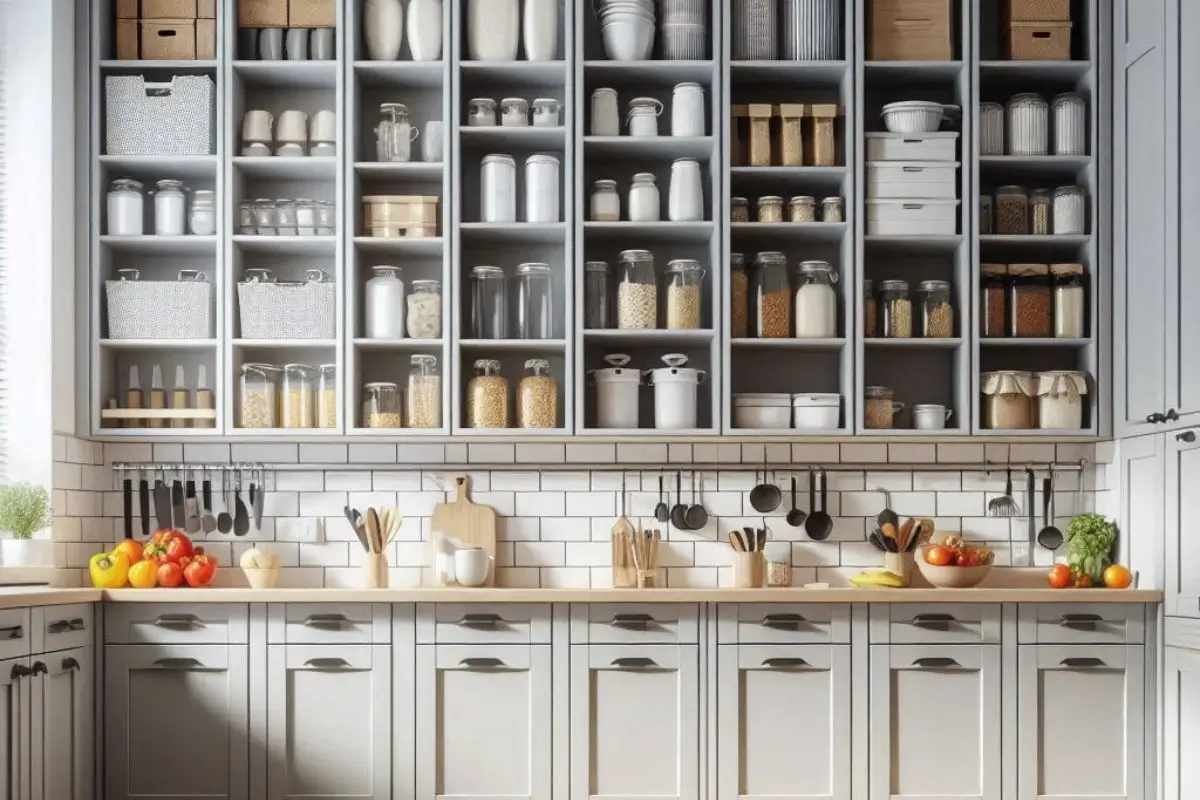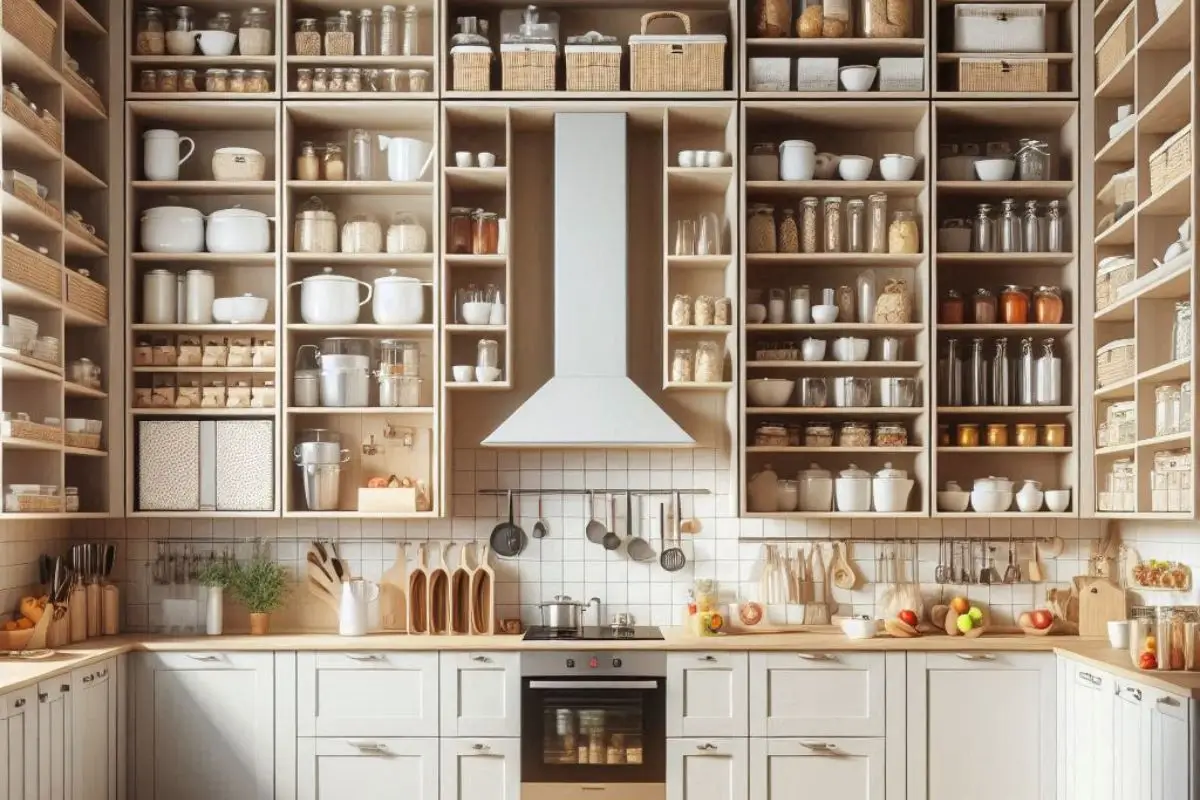
How Kitchen Cabinet Sizes Impact Functionality and Style in Your Kitchen Design
The kitchen is the heart of the home, and the cabinets play a crucial role in both its functionality and style. While choosing the perfect cabinet style, material, and color is essential, cabinet sizes often get overlooked. However, the size of your kitchen cabinets can significantly impact how efficient, accessible, and aesthetically pleasing your kitchen is. From maximizing storage space to enhancing the visual appeal, the right cabinet sizes ensure that your kitchen performs optimally while maintaining its style. This blog explores the importance of cabinet sizes in kitchen design, highlighting how they affect both functionality and aesthetics.
Maximizing Storage Capacity with Proper Cabinet Sizing
When designing your kitchen, the first consideration should always be storage. The size of your kitchen cabinets directly impacts how much you can store. Cabinets that are too small will force you to compromise on storage, leading to clutter and disorganization. On the other hand, oversized cabinets in a small kitchen can make the space feel cramped and hinder movement. Proper cabinet sizing, particularly in terms of height, depth, and width, allows you to store more while maintaining an organized and efficient layout. For example, taller cabinets can provide more vertical storage, perfect for items like vases, large containers, or small appliances. Custom-sized cabinets are an excellent solution for maximizing space in tight kitchens, such as narrow cabinets for spices or pull-out cabinets for trash bins. Additionally, corner cabinets or deep cabinets with pull-out shelves make use of hard-to-reach spaces, further optimizing storage capacity.
Ergonomics: Ensuring Comfortable Access and Use
The right kitchen cabinet sizes not only affect storage but also your comfort while using the kitchen. Ergonomics plays a key role in cabinet height, depth, and design. Standard cabinet height may not work well for everyone. A shorter person may struggle with overhead cabinets that are too high, while a taller individual may find it uncomfortable to reach down into low cabinets. Custom cabinets can address this, creating spaces that suit the specific needs of all users. For example, lower base cabinets can be designed with deeper shelves, while upper cabinets can be lowered to an accessible height. This also reduces the need for step stools or excessive bending, ensuring ease of use for all ages and abilities. Cabinets with pull-out drawers or lazy Susans enhance accessibility by reducing the need to bend over or reach into deep corners. When the dimensions of your cabinets align with ergonomic principles, they contribute to a functional, comfortable kitchen.
Enhancing Workflow Efficiency with Strategic Cabinet Placement
A kitchen is most efficient when the layout supports a seamless workflow. The “kitchen work triangle,” a concept that positions the sink, stove, and refrigerator in a triangular pattern, is a fundamental consideration when determining cabinet sizes and placement. Properly sized cabinets help maintain this efficient layout, minimizing the time spent moving between stations. For instance, tall cabinets or pantries should be placed close to the refrigerator to easily store food items, while deep drawers near the stove can hold pots and pans. Base cabinets with pull-out shelves allow for better accessibility to cooking tools without the need to open multiple cabinet doors. A well-thought-out kitchen layout ensures that all cabinetry, from storage to appliance integration, is functional and efficient, helping you navigate tasks like meal prep, cooking, and cleaning with ease. Additionally, considering the flow between cabinets and open spaces helps prevent congestion in high-traffic areas, such as around the sink and stove.
Seamless Integration of Appliances with Cabinet Sizes
In modern kitchens, appliances often need to be integrated seamlessly into the cabinetry to achieve a polished look. This requires precise measurements to ensure that cabinets are sized appropriately to accommodate built-in appliances such as ovens, microwaves, dishwashers, and refrigerators. If cabinet sizes are not tailored to the exact dimensions of appliances, there will be unsightly gaps, affecting the kitchen’s overall aesthetic. Custom cabinets can be designed to create a streamlined, cohesive appearance. For instance, a built-in refrigerator can be surrounded by cabinetry to create a sleek, professional finish. Similarly, wall ovens or under-counter microwaves require cabinets to be sized correctly for easy installation and accessibility. Planning cabinet sizes around appliance placement ensures that the kitchen not only looks stylish but functions efficiently.
Achieving Visual Balance and Harmony in Your Kitchen
The size of kitchen cabinets also plays a crucial role in the visual balance and proportions of the space. The aesthetic of the kitchen depends on the way the cabinets interact with the rest of the design elements. If the cabinets are too large for a small kitchen, they may overwhelm the space, making it feel cramped. Conversely, cabinets that are too small may look out of place in a large kitchen, creating an unbalanced effect. A combination of varying cabinet sizes—such as tall upper cabinets paired with shorter base cabinets—can create a dynamic and balanced look. Additionally, incorporating open shelving with closed cabinets allows for visual variety and prevents the kitchen from appearing too heavy. The correct cabinet sizes help create harmony between storage solutions and the overall design theme, whether modern, traditional, or industrial. This balance ensures that your kitchen is both functional and visually appealing.
Custom vs. Standard Cabinets: Finding the Right Fit
When deciding between custom or standard cabinets, it’s important to weigh the trade-offs. Standard-sized cabinets offer a cost-effective and time-efficient solution, but they may not always provide the perfect fit for your kitchen. In some cases, standard cabinets may waste space, particularly in unusual kitchen layouts or smaller kitchens. Custom cabinets, on the other hand, offer complete flexibility in design, allowing you to tailor the size, shape, and functionality of each unit to your exact needs. While custom cabinets tend to be more expensive, they maximize storage, improve accessibility, and fit your kitchen’s specific dimensions perfectly. The choice between custom and standard cabinets ultimately comes down to your budget, kitchen layout, and design preferences. Both options have their merits, and the right decision depends on your priorities.
Impact of Cabinet Sizes on Kitchen Layout Design
The size of your cabinets can significantly influence your overall kitchen layout. Open shelves, for instance, are ideal for creating a sense of openness in smaller kitchens, but they require careful sizing to prevent overcrowding. Deep cabinets, on the other hand, are perfect for large kitchens where space is abundant, but they should be spaced appropriately to avoid blocking traffic. Larger cabinets can create the appearance of a more expansive space but can also make the kitchen feel heavy if not balanced with other design elements. Incorporating larger cabinets for pantry storage or integrating them into an island unit allows for more functionality without compromising aesthetics. When choosing cabinet sizes, it’s essential to consider the flow of the kitchen and how each unit will interact with the others to create a balanced and efficient layout.
Staying on Trend with Cabinet Size Variations
Cabinet sizes also help reflect the latest design trends. For instance, minimalist kitchens benefit from sleek, full-height cabinets that create clean lines and uncluttered spaces. Meanwhile, more traditional or farmhouse kitchens often incorporate cabinets with varying heights and widths to create a sense of character and charm. The versatility of cabinet sizes allows designers to adapt to changing trends, from modern, streamlined cabinets to more rustic, vintage-style units. Two-tone cabinets, where base cabinets are one size and upper cabinets another, are a popular trend in both contemporary and transitional kitchens. By selecting cabinets that fit with both current trends and personal style, homeowners can ensure that their kitchen remains stylish for years to come.
Practical Tips for Measuring and Choosing Cabinet Sizes
Proper measurement is key to choosing the right cabinet sizes. Start by measuring the available space carefully, accounting for appliances, door swings, and traffic flow. Always leave enough space between cabinets and countertops for ease of movement. Additionally, consider ceiling height when choosing cabinet size—taller cabinets can be ideal for maximizing storage in kitchens with high ceilings. If you’re unsure about the dimensions, it’s worth consulting with a kitchen designer or using online design tools to visualize the space before making a final decision. Accurate measurements ensure that your cabinets will fit properly, without wasted space or misalignments.
Balancing Material Choices with Cabinet Sizing
The size of your kitchen cabinets also influences your material choices and overall budget. Larger cabinets will require more materials, which can increase the overall cost of your kitchen remodel. Custom cabinets, while providing a perfect fit, often require higher-quality materials and finishes, driving up the cost further. For example, larger cabinets with intricate moldings may need more premium wood, whereas simpler designs can be made from more affordable materials. Balancing size with your material preferences ensures that your kitchen is both aesthetically pleasing and within budget. Choosing the right materials for your cabinets also affects their durability, so it’s important to select quality materials that can support the intended size of the cabinets.
Conclusion
Cabinet sizes are a critical element in designing a kitchen that is both functional and stylish. From optimizing storage and enhancing accessibility to creating a visually balanced layout, the right cabinet sizes help ensure that your kitchen performs well and looks great. Whether you choose custom or standard sizes, paying attention to the specific dimensions that best suit your space will lead to a more efficient, comfortable, and aesthetically pleasing kitchen. By following these guidelines and working with experienced designers, you can create a kitchen that meets all your needs while remaining on-trend and timeless.




0 comments